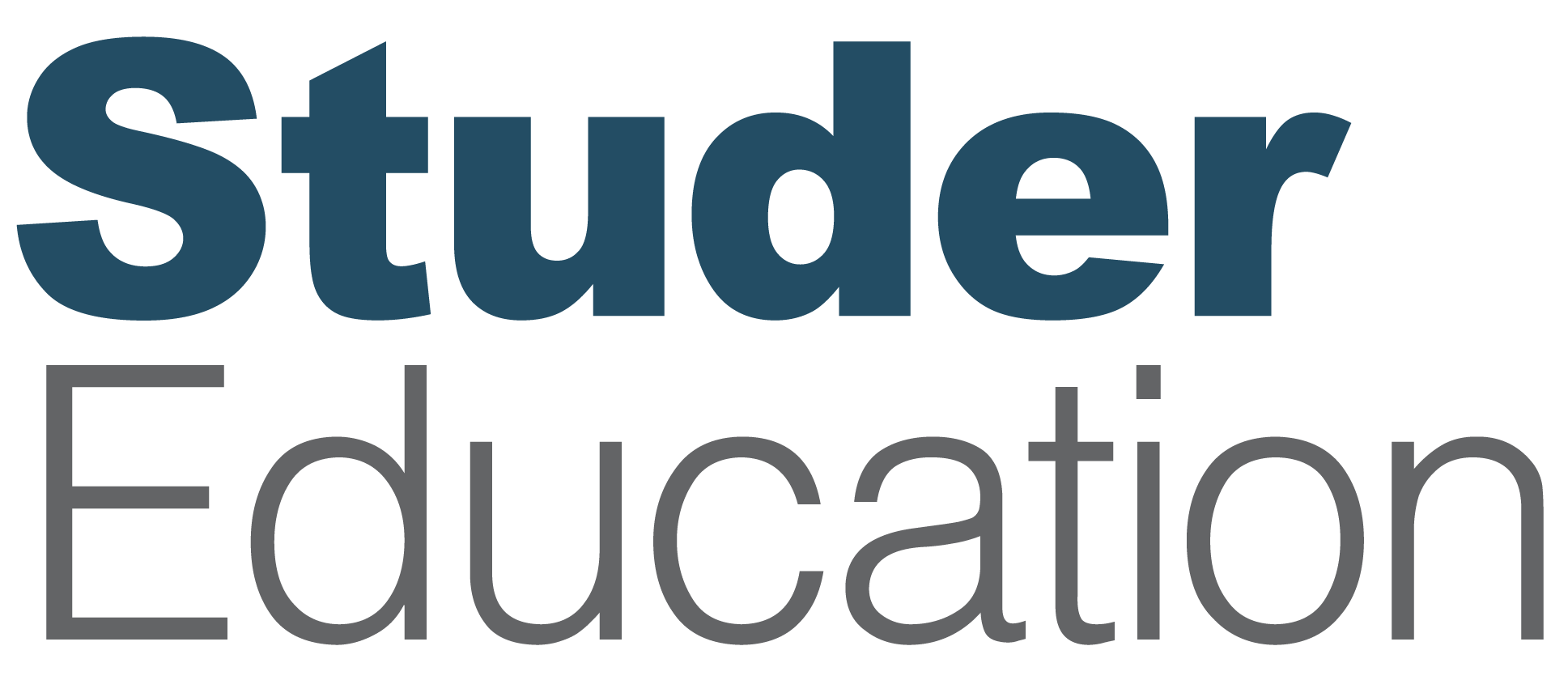
In another live episode recorded at the Destination High Performance K-12 Leadership Conference, Dr. Janet Pilcher welcomes Superintendent Dr. Casey Nye of D.C. Everest Area School District. Listen as Dr. Nye shares his approach to building and sustaining a strong culture of caring and continuous improvement. He shares how his district:
- intentionally gathers feedback from families through surveys,
- uses that data to drive meaningful action,
- and communicates with empathy and transparency, especially during difficult moments.
He also discusses the importance of creating a supported, resilient leadership team and the role of gratitude in combating loneliness and creating joy.
This episode addresses questions such as:
- How can a school district effectively use parent surveys to build stronger relationships with families?
- What does it mean to be a leader who is both empathetic and effective during challenging times?
- Why is it crucial to create a culture of support for district leaders?
Latest Episodes
Casey Nye: That’s something that we want to be known for. We want people to believe that we authentically will be there to support them.
[Intro music plays in the background.]
Introduction
Janet Pilcher: Hello, everyone. Welcome to the Accelerate Your Performance podcast. I’m your host, Dr. Janet Pilcher, founder and president of Studer Education.
Last week, you heard from Dr. Cory Strasser, straight from the stage at our Destination High Performance K-12 Leadership Conference this past summer. This week, we’ll continue our Accelerate Your Performance Live series with Dr. Casey Nye.
Casey is the superintendent of the D.C. Everest Area School District in Wisconsin. He brings over 23 years of experience to public education, having served in diverse roles from kindergarten teacher to assistant superintendent.
This conversation is important because good communication early on sets the stage for how the rest of the year is going to go. And that’s what we’re diving into today. We’ll talk about how to achieve service excellence by actively listening to parents and families. So, so important. We’ll dive into how Casey and his team use survey data to drive improvement, handle difficult situations with transparency and care, and build a culture of resilience and support for their leaders. Above all, you’ll hear about the importance of authentic intentional communication in every interaction. So let’s get started.
Interview
Janet Pilcher: Casey, thank you and welcome today.
Casey Nye: Glad to be here. Thank you.
Janet Pilcher: So we’re going to talk a little bit about service. As we enter into this part of our conference, we’re going to begin to focus on service excellence. So let’s get started with how we provide great service to our parents and families. So talk a little bit about how you roll out the survey results to your parents and build the better working relationships with your families.
Casey Nye: Yeah. So a little bit about our big thing is I saw that in a slide, I thought it was very simple, like our pillars, DC ever wants to be a great place to learn, great place to work and support a great community. So we’re 11 different municipalities that are stitched together and we have people like, I think a lot of the districts in this room that, when they come to work for us, they stay for a long time. So we have a really healthy, informal culture and lots of great connections with people, with our families in particular through our staff and our teachers and our principals that stick around for a long time.
When we started with the survey with Studer, we recognized it would be a good compatible match to that really informal conversations that we have with families and forced us to ask some different questions. And it really helps us open up different kinds of conversations that we would have if we didn’t have that kind of formal tool.
Janet Pilcher: Yeah. So talk a little bit more about that, how you roll them out, how you develop the actions. We’ve heard a little bit about that at the conference, but you know, how, and then how do you monitor your progress? How do you use that data?
Casey Nye: Yeah. Yeah. I think our partnership with Studer, I was looking at these, the people and service piece, DC Everest is really good at and shout out to our coach, Melissa Matarazzo, who’s not here today. Melissa brings a different level of formality. How many people work with Melissa in the room?
[Audience response]
Yeah. All right. Absolutely.
Melissa, I think, forces us to get better at some of the things that don’t happen as naturally, so that intentionality is all about measurement and numbers, but at the same time, we’re trying to get people to have different kinds of conversations and say it’s not necessarily about the numbers. It’s about having these really purposeful yet aligned conversations across the organization.
So our rollout is really well supported by Melissa in that we’re bringing everybody into the room. And there are lots of conversations around what are the key messages, lots of sharing across our leaders in terms of what they’re seeing within their scores and their buildings, their departments, but then also what are the commonalities across the district. So we’re pretty active in trying to scaffold that structure, but then at the same time, we leave a lot of room for our people to deliver that and engage with their stakeholders in different ways.
Janet Pilcher: Yeah. So Casey, as you’re rolling out the parent surveys, you mean you’re rolling that information out to the teachers and the principals and in the schools. Do you have a way that you’re connecting with parents to help them know that their feedback is important?
Casey Nye: Yeah, we have a number of different structures that have been in place to invite parents in, whether it’s old school, PTO meetings to talk about things. We have Connect and Collaborate and Community Collaborate and opportunities for people to come into our schools or our central office to talk about different projects, and we’re constantly trying to integrate that information in.
We also send out annual communication that specifically outlines what we heard from families, and then we try throughout the course of the year really to collect what we’re doing in response to that. It’s tricky because the way that we integrate that feedback, knowing that it is from a portion of our families, means that we have to constantly be watching and asking about where did we respond, where did we hear what they were asking us to get better at or improve, and then how did we really dig in and try to make that better? So that’s something that I think as our leaders with all aspects of their continuous improvement try to really build that into their school level plans, that is one portion of the data. Like I know this summer, our school leadership teams come together and there’s for sure academic and behavioral data, but there’s also this portion that helps round that out.
Janet Pilcher: That’s great that you include that as part of one of your pillars and looking at the outcomes and measuring that progress, and then also just making sure that parents know that their input matters in that process.
I think, Casey, it’s going to become even more important. You know, as times go on, I mean, with the changing landscape of where we are, our families are going to have more choice and they’re going to basically look at us from a place where we’re providing service, good service to them. So appreciate you all taking that interest.
Talk a little bit then about some of the actions that have worked well when you’ve improved parent satisfaction.
Casey Nye: Yeah, I think, you know, all of this, as I think has been a theme here, is about better and improved communication. Again, with our leaders, it’s not so much about that number, but about how do we respond to what we’re hearing.
One of the things that I think the surveys allow us to do, especially within the narrative, is to detect gaps, especially in our own understanding of what we think that we’re doing really well at. We had, you know, I’m being real with a friendly room here today, and our survey, unfortunate timing of a threat incident at one of our schools. And so we had great engagement in that setting.
And so I think that sort of detection of gaps in this case, and I, you know, again, a sign of the times, there are more safety related concerns. There are more behavioral challenges. And I think I heard KK talk about the sliding scale of transparency. And this is one of those moments where, in order for us to do better, we’re going to have to acknowledge that there’s a confidentiality aspect. There are also things like some of our case studies earlier that are outside of what a school district alone can address. There are law enforcement implications and another layer of, you know, what we can and can’t share.
But I think what we’ve tried to do is acknowledge pretty bluntly, “We hear that this is an area that you’d like to learn more about. Here are ways that we can give you information about our threat assessment protocol, how we align to safety.” And I think that one, this year, was probably our toughest kind of parent communication, but at the same time, I think we learned a lot about just being real with people and trying to get to the point of being able to say there are aspects that we can’t share with you, but there are pieces if you’re willing to come in and engage, that we’ll try to tell you more about.
And so general strategy, we do try to get that communication down right to the people that are closest to our families. And so if we can get a principal to be playing out of the same playbook and offer that opportunity to come in and talk about safety, we know that’s going to have more of an impact than coming from on high, so to speak.
Janet Pilcher: Absolutely. Yeah, good. So let’s dig a little bit deeper into that. Sometimes, you know, that I mean, we’re sharing information. Sometimes we’re sharing the bright spots and really managing that up. And then at other times we’re having to work through just those difficult moments with customers or community, or just, how do you work through the times when you’re getting that feedback and you’re having to work with your teams through those difficult times of communication?
Casey Nye: I think we, like so many organizations, try to really look at what are our values and what do we want to be known for? And I think in connection to that idea that we have people that stick around and stay with us for a long time. Part of that is a culture of caring and wanting to be conscious that that’s something that we want to be known for. We want people to believe that we authentically will be there to support them. We’re going to talk through the hard times when that happens.
And I think there were statistics about loneliness and we were talking a little bit about that at our table at lunch. And leaders are lonely too. It is isolating. And the last thing in our system we want is, especially a principal, whether they’re veteran or brand new, to feel that they’re going it alone.
So I do think we over communicate often. Hopefully it’s sometimes about the important stuff. Melissa would say it’s not always about the important stuff. We like to have fun. But we will be on the phone or in the room and we’ll strategize, we’ll role play. We’ll talk through anticipated questions that we’re going to get. And we’ll make sure that whoever’s delivering that message is feeling that they’re delivering an aligned message. They’ve got support. And if they need even down to practice on that, that they’re positioned to be ready to deliver that message with support.
Janet Pilcher: Yeah, and as you’re talking, Casey, I think it connects a little bit back to what Mark and KK were talking about with, I mean, communication is so much a part of what we do. So we’re gathering that data in, we’re acting on it, we’re communicating the action. And then we’re kind of managing through those difficult moments.
And superintendents are kind of under the gun a little bit. You’re having to answer those difficult questions. You’re having to manage through the system. You’re having to work with your communities in particular ways through those external factors within the organization that I kind of started with this morning. Things we don’t necessarily control, but we still have to manage to those external factors.
So what process do you go through as you’re answering those tough questions and as you’re managing through those difficult moments where we have to get to a point where we’re trying to still build that caring environment?
Casey Nye: Yeah, my brain goes to some of the tougher, harder parts that any school district has to deal with. And for us, we had a student death this year. And unfortunately, it’s not our first time or most of the people’s in the room experience with that. And I think for school leaders today, if we are continually surprised when that happens, if we, not necessarily about a death, but we have to expect that we’re going to deal with hard things. And people look to us in our community to be able to do that effectively, transparently, with caring expertise. And so I think we try to ready our leadership team for that too.
Something new that we’ve tried to do this year is to try to really lean into the brain science and try to have resilient leaders. And we worked with a neuroscientist out of Milwaukee who talked about higher brain and lower brain and, like anything that you do with a staff, including a leadership team, like you know when it gets mocked a little bit, when it sort of enters into the, oh, “I’m in my lower brain right now,” that you’ve got a message that might actually be starting to stick.
And so we’ve had to practice that because I think we all, you know, in the simplicity of that neuroscience, when the emotion kind of drags us down and we’re not really thinking, you know, in a more strategic, metacognitive way, it’s harder for us to be effective.
So we’ve just called that out. We’ve talked about the hard stuff and talked about what our brains do, and we’re no different than anybody else, even if we think we’re special as leaders. But I also think along with that resilience and feeling of being supported, we try to have fun, and this is where I think how much time in meetings do we spend on joy?
I think gratitude, Studer does a great job of emphasizing the need to stop and reflect and be thankful. And we try to integrate those things in and of course it’s always hard because people are busy. But we’ve just said we’re committed to doing that and we’re going to make sure that we’re constantly building that in.
I think the other thing I do a lot of is apologize, a lot of times for things that I have nothing to do with, that aren’t really my challenge, but I think our leaders as a whole are willing to try to own mistakes that are theirs.
And I was talking to Heidi before, we don’t all get to give a shout out to our boards very often. I have an amazing board. And so one of the things that comes with that is that our board doesn’t really let us off the hook when it comes to sphere of influence. And yeah, that’s a community challenge. And yes, in reality, we know that there’s only so far we can take certain efforts and what control we have. But we’re also seen as the conveners, and we bring people together. So we’re very fortunate to be able to be a part of larger community conversations.
Janet Pilcher: Yeah, really, that’s so good. I mean, you’re not just the leader of your district. You really are an influencer within the community. You’re connected to that community. You’re bringing the community together.
So Casey, as we close today, as you think about throughout your leadership and where you are today, and you think about, you know, the loneliness piece really hit me with that stat. And when you were talking about, you’re right, leaders are lonely too. It’s our, the employees, and leaders are included in that, where people need to really know what they do matter and how they show value to others.
Talk a little bit just about, as a leader, how that’s meaningful to you and what’s most important for you to do each and every day as you lead as a superintendent.
Casey Nye: I have had the incredible good fortune of having amazing mentors along the way. So sometimes it’s just thinking back to what was given to me and how I was treated by those people. And I know that’s, again, not something that everyone has the good fortune of having. But I can think of four people immediately that were just hugely impactful. And so they reached out and checked on me. They actively prepped me for things that they knew would be new to me. They would follow up after a tough conversation. They would tell me when I was a moron, which was often.
Janet Pilcher: [laughs]
Casey Nye: I think having that network is so important for all of us. And I think it’s harder for superintendents. I’ve definitely, this is year four for me, year 19 in the district that I’m in. And it kind of gets a little lonelier. I had to adjust to, okay, this is not probably where I’m gonna get that support. But I just think it’s so important to encourage other people to build networks to at whatever role that they’re in so that none of us are going alone.
Janet Pilcher: Yes, so good. And on that note, that’s one reason tomorrow morning we’ll have the superintendent’s breakfast. So we have an opportunity for any superintendent here to build that network. One of the things that I’ve really committed myself to as I get more, closer to the end of my career, so to speak, it’s really important to me, I think, the mentoring piece is to really think in terms of, what have I done that’s made a difference to other people’s lives in ways that they can build their professional lives? Am I doing a good job with that? And how can we bring together a network of people who are doing excellent, good work every day with a good, caring heart? And doing the heavy work and the heavy lifting to do the work that we need to do for our families, our students, and the people we work with.
You do that. You do that well. I appreciate you being here and thank you for joining me today.
Conclusion
[Outro music plays in the background.]
Janet Pilcher: Thank you, Casey, for your dedication to the D.C. Everest community. It’s clear that your commitment to creating a caring and supporting environment for your team directly impacts your ability to serve students and families well. I appreciate you highlighting the importance of building a strong support network and the value of having a culture where leaders can be honest about the challenges they face.
So let’s commit to being the kind of leader who shows up for our teams, especially in difficult moments. Let’s remember to lean into our networks and build a supportive environment for ourselves and others.
If you enjoyed this conversation, you won’t want to miss our next Destination High Performance K-12 Leadership Conference in Hemet, California. It’s taking place in October, and because we’re keeping space limited to ensure a high-quality immersive experience, I highly recommend that you register as soon as you can. And visit our website at studereducation.com/events to learn more and click the link in the show notes to see more about it. It truly is a special event.
Thank you for tuning in to this episode of the Accelerate Your Performance podcast. I look forward to seeing you next time as we continue to work together toward organizational and leadership excellence. Have a great week, everyone.
Featured Guest

Dr. Casey Nye
Superintendent • D.C. Everest Area School District, WI
-
Janet Pilcher President








